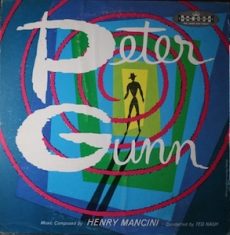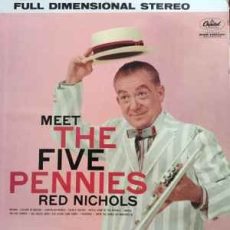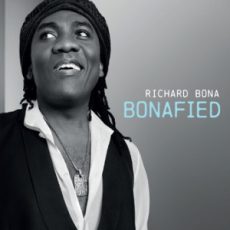
Daily Dose Of Jazz…
Theodore Malcolm Nash Sr. was born on October 31, 1922 in the Boston suburb of Somerville, Massachusetts. His goal was to become a classical flutist until he began playing saxophone in his early teens. He started playing professionally when he went on the road with a succession of dance bands. In 1944, he became tenor saxophonist for the Les Brown big band.
The late 1940s had him married and settling in Los Angeles, California where he became an active session musician in the Hollywood movie and television studios. In 1956, he recorded with Paul Weston’s orchestra the album Day by Day, with vocals by his former colleague and close friend, Doris Day.
He was the featured soloist on The Music from Peter Gunn soundtrack, performing the alto saxophone solo on the theme and on the second bridge of Dreamsville. Through the 1950s and 1960s, he worked as a sideman for June Christy, Nat King Cole, Bing Crosby, Billy Eckstine, Ella Fitzgerald, Frank Sinatra, and Nancy Wilson. During the 1970s, he worked with Judy Collins and Quincy Jones.
Retiring in the 1980s, saxophonist, flutist and clarinetist Ted Nash Sr. died on May 12, 2011.
More Posts: clarinet,flute,history,instrumental,jazz,music,saxophone

Daily Dose Of Jazz…
Trilok Gurtu was born October 30, 1951 to Hindu Brahmin parents in Mumbai, India. His mother was a famous classical vocalist who encouraged him to learn to play the tabla. He attended Don Bosco High School in Mumbai and he received formal training in percussion from Shah Abdul Karim.
Gurtu began playing a western drum kit in the 1970s, and developed an interest in jazz. Not understanding overdubbing he learned multiple parts which most musicians would have never attempted. In the 1970s, he played with Charlie Mariano, John Tchicai, Terje Rypdal, and Don Cherry.
In 1977 he recorded Apo-Calypso, an album by the German ethnic fusion band Embryo. His mother also sang on that record, and later joined him on his first solo CD, Usfret. The 1980s saw Trilok playing with Swiss drummer Charly Antolini and with John McLaughlin in McLaughlin’s trio. He joined Oregon and played on three of their records. In the early 1990s, he resumed his career as a solo artist and a bandleader.
By the end of the decade he was a member of Tabla Beat Science, collaborated with the Arkè String Quartet in 2007, and in 2012 with the electronic folk duo Hari & Sukhmani. He has worked with Terje Rypdal, Gary Moore, John McLaughlin, Jan Garbarek, Joe Zawinul, Michel Bisceglia, Bill Laswell, Maria João & Mário Laginha, Stefano Bollani and Robert Miles.
Drummer, percussionist, tabla player and composer Trilok Gurtu continues to compose, perform and record.
More Posts: composer,drums,history,instrumental,jazz,music,percussion,tabla

Jazz Poems
CHASING THE BIRD
The sun sets unevenly and the people
go to bed.
The night has a thousand eyes.
The clouds are low, overhead.
Every night it is a little bit
more difficult, a little
harder. My mind
to me a mangle is.
ROBERT CREELEY
from Jazz Poems ~ Selected and Edited by Kevin Young
More Posts: book,classic,collectible,history,jazz,library,poet

Daily Dose Of Jazz…
Rollie Culver was born Rolland Pierce Culver on October 29, 1908 in Fond du Lac, Wisconsin. His first entry into professional entertainment was as a tap dancer, but after 1930 he concentrated on drumming.
He went on to play in the territory band of Heinie Beau for most of the Thirties, then in 1941 he began playing with Red Nichols. He drummed behind Nichols for more than twenty years, working with him right up to his death in 1965.
Throughout the rest of his career he played with Jack Delaney and Raymond Burke, and as a session musician for film soundtracks.
Drummer Rollie Culver died on December 8, 1984 in Culver City, California.
More Posts: drums,history,instrumental,jazz,music

Daily Dose Of Jazz…
Richard Bona was born Bona Penda Nya Yuma Elolo on October 28, 1967 in Minta, Cameroon. His family of musicians enabled him to start learning music from a young age. His grandfather was a griot and percussionist, as his mother was a singer. When he was four years old he started playing the balafon. At five he began performing at his village church, however, not being wealthy, he made many of his own instruments, flutes and guitars.
He began learning to play the guitar at the age of 11, and in 1980 at 13 he assembled his first ensemble for a French jazz club in Douala, Cameroon. The owner befriended him and helped him discover jazz starting with Jaco Pastorius, which inspired Bona to switch his focus to the electric bass.
Emigrating to Germany at the age of 22 he studied music in Düsseldorf, soon relocating to France, where he furthered his studies in music. While in France, he regularly played in various jazz clubs, sometimes with players such as Manu Dibango, Salif Keita, Jacques Higelin and Didier Lockwood.
He left France and established himself in New York City, playing bass guitar with Joe Zawinul, Larry Coryell, Michael and Randy Brecker, Mike Stern, George Benson, Branford Marsalis, Chaka Khan, Bobby McFerrin, and Steve Gadd, among others. In 1998, Bona was the Musical Director on Harry Belafonte’s European Tour.
His debut solo album, Scenes from My Life, was released in 1999. He has also been prominently featured in Jaco Pastorius Big Band albums. As an educator he held a professorship of jazz music at New York University. For five years beginning in 2015 he owned with restaurateur Laurent d’Antonio, the jazz club Club Bonafide in the city.
Bass guitarist, guitarist, percussionist and vocalist Richard Bona continues to compose, record and perform.
More Posts: bass,guitar,history,instrumental,jazz,music,percussion,vocal


